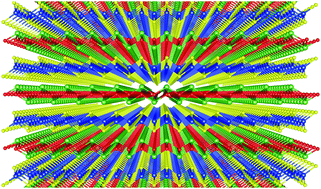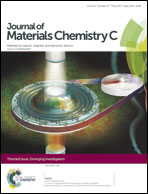Understanding doping anomalies in degenerate p-type semiconductor LaCuOSe
Abstract
The failure to develop a degenerate, wide band gap, p-type oxide material has been a stumbling block for the optoelectronics industry for decades. Mg-doped LaCuOSe has recently emerged as a very promising p-type anode layer for optoelectronic devices, displaying high conductivities and low hole injection barriers. Despite these promising results, many questions regarding the defect chemistry of this system remain unanswered, namely (i) why does this degenerate semiconductor not display a Moss–Burnstein shift?, (ii) what is the origin of conductivity in doped and un-doped samples?, and (iii) why is Mg reported to be the best dopant, despite the large cation size mismatch between Mg and La? In this article we use screened hybrid density functional theory to study both intrinsic and extrinsic defects in LaCuOSe, and identify for the first time the source of charge carriers in this system. We successfully explain why LaCuOSe does not exhibit a Moss–Burstein shift, and we identify the source of the subgap optical absorption reported in experiments. Lastly we demonstrate that Mg doping is not the most efficient mechanism for p-type doping LaCuOSe, and propose an experimental reinvestigation of this system.

- This article is part of the themed collection: Emerging Investigators

 Please wait while we load your content...
Please wait while we load your content...